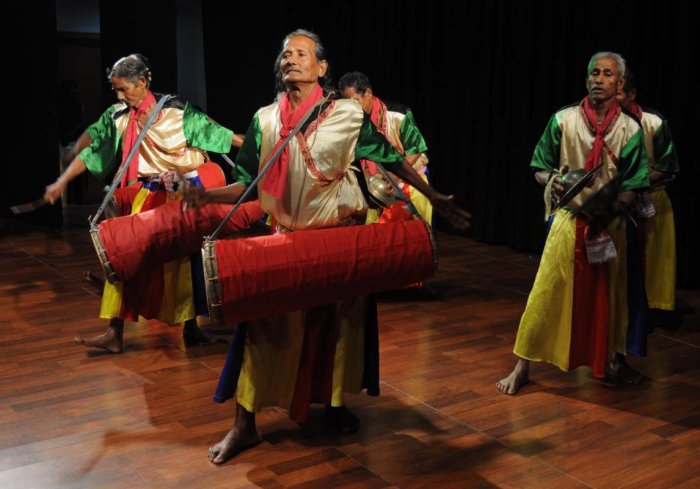
|
 |

|
 |
|
Dhepa Dhol / Dhepa Dhulia dance - Meenakshi Medhi e-mail: meenakshisattriya@gmail.com Photos: Arup Jyoti Kalita (This article is part of Meenakshi Medhi’s documentary project under EZCC, Govt. of India on Dhepa Dhol/Dhulia dance which is becoming extinct today.) August 12, 2016 Dhepa Dhol, made from the trunk of mango tree, is a cylindrical drum of 1.5 mtr length. It takes 6 to 7 days to prepare the instrument. For better preservation, “Matia tel” (oil) is used while making this dhol. This dhol has a narrow left end which is called “Taali”. It is interesting that both ends of the dhol is covered with leather made from the skin of Khassi goat. The right end which is said to be “Kup” is double layered and has a small hole on the outer layer. With the help of “Pani Khuwa Khila” (the hole on the outer layer) water is poured into the small hole between the layers so as to get a thud sound. A unique sound is created when the Kup end of the drum is beaten with the "Bojuwa baah" (playing stick made with bamboo) . The instrument is so known as dhepa dhol due to the unique sound produced.   Presently, this dance form is practiced in many places of Kamrup district like Rangia, Nalbari, Barpeta etc. Sattriya dancer Meenakshi Medhi has been trained under some of the illustrious exponents of Sattriya dance tradition. She runs an institute Satkara (Sattriya Nrityar Prakhishan Kendra) which is affiliated under Asom Sattra Mahasabha. Post your comments Please provide your name and email id when you use the Anonymous profile in the blog to post a comment. All appropriate comments posted with name & email id in the blog will also be featured in the site. |